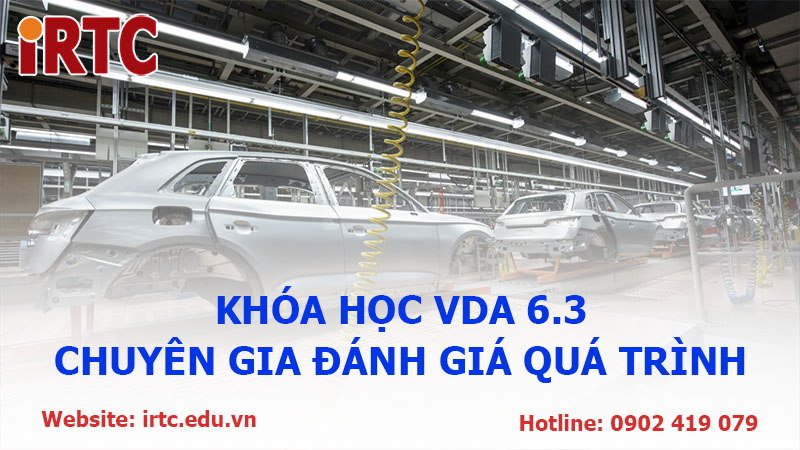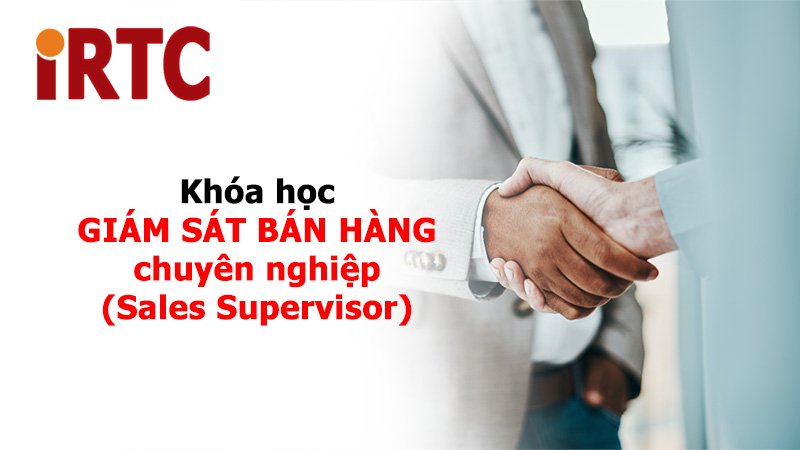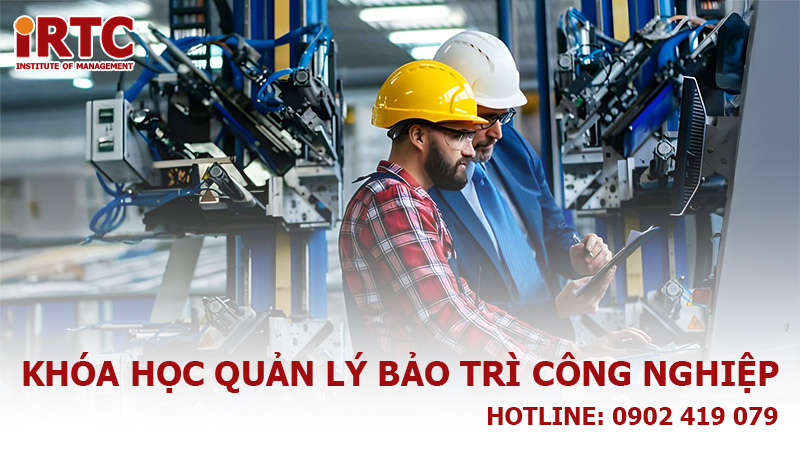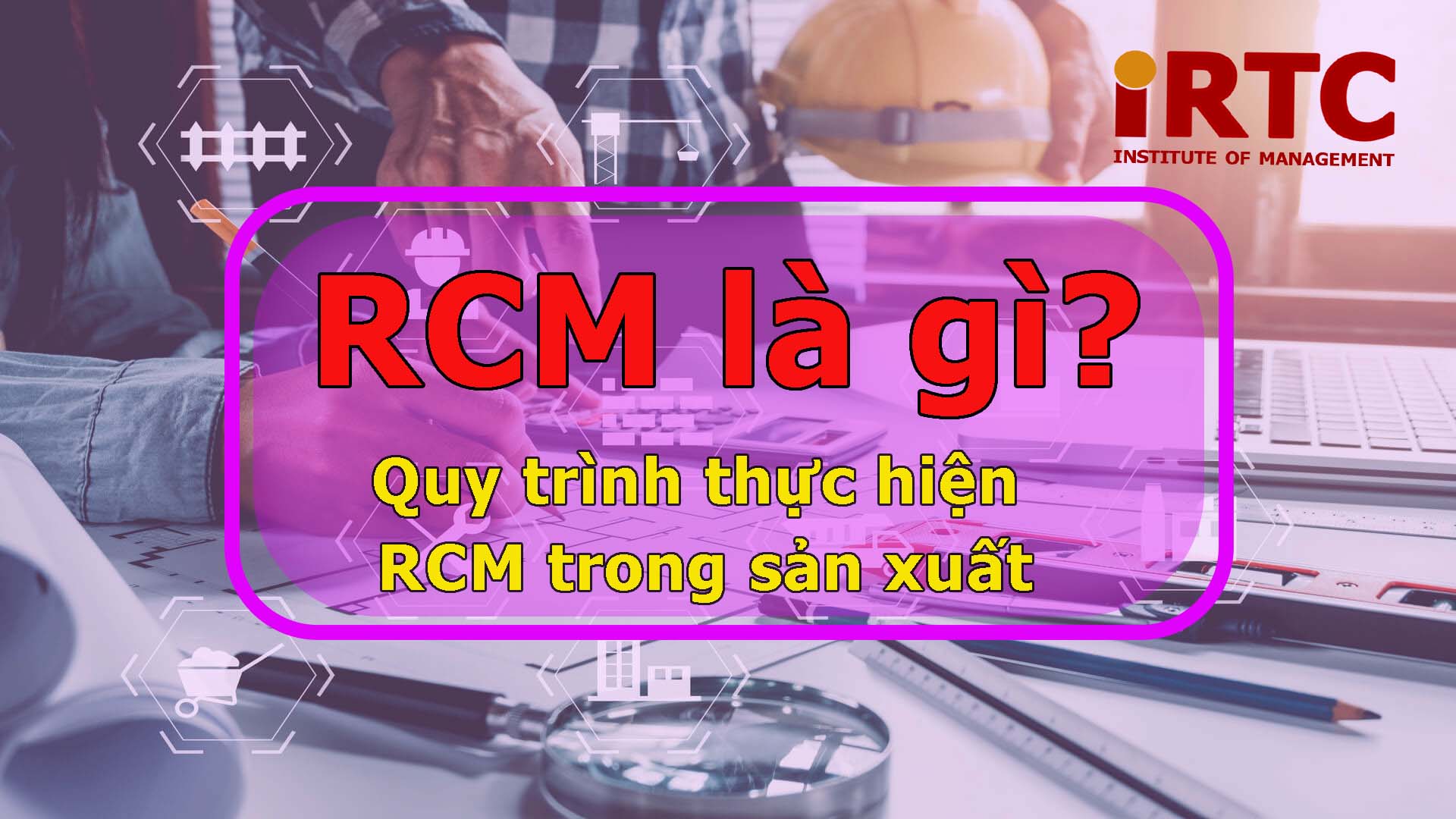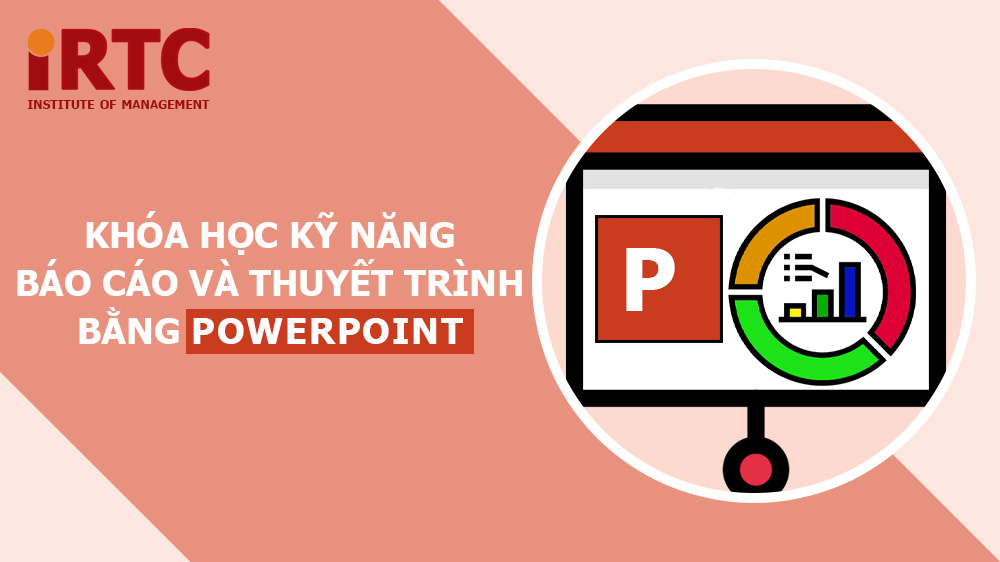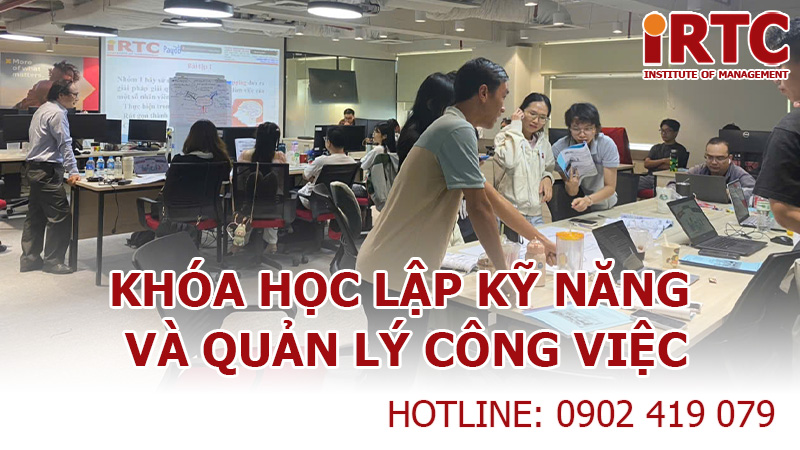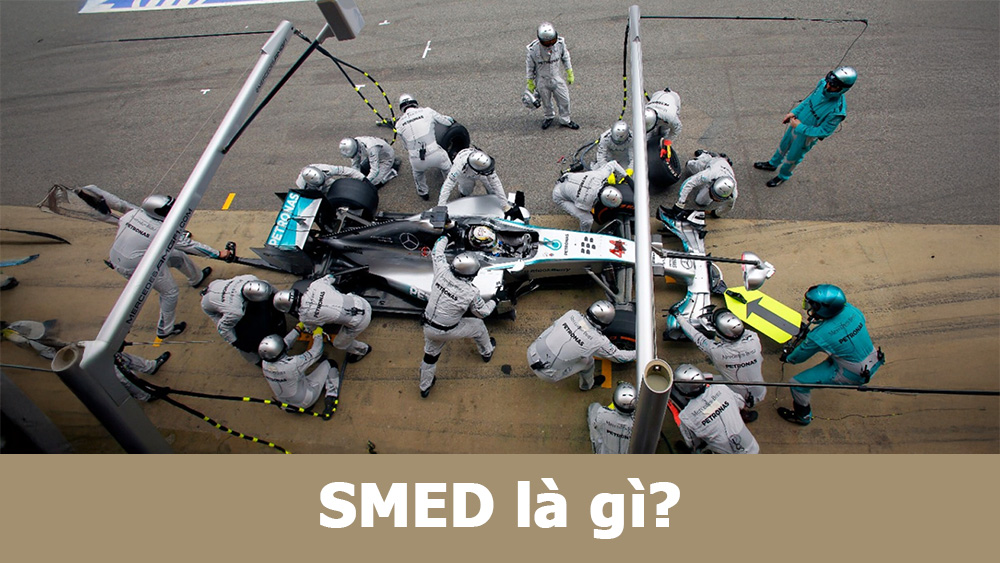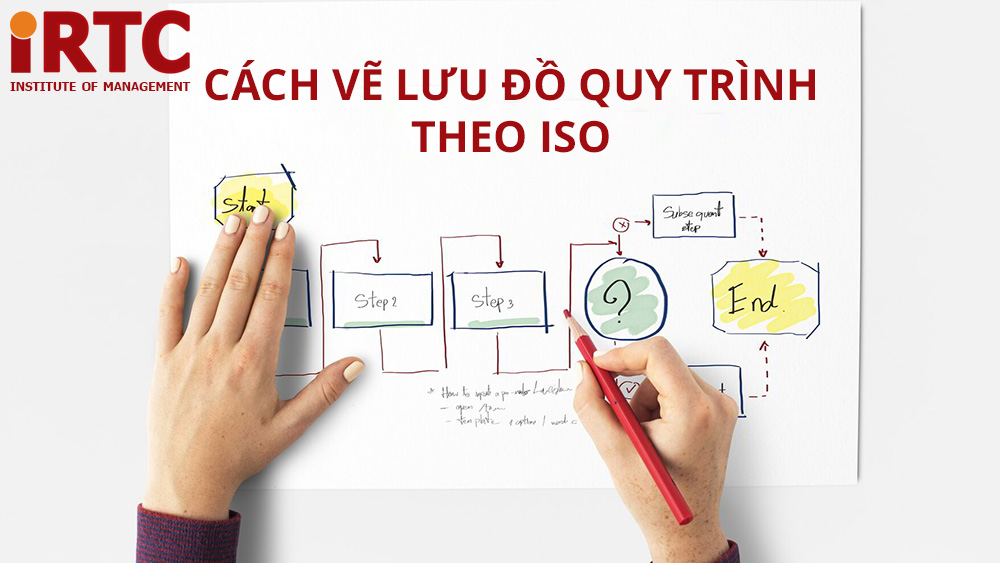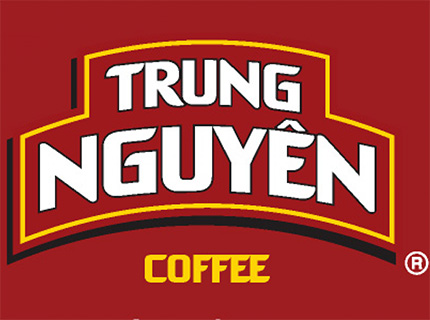IATF 16949
Mục lục [Ẩn]
Nội dung tiêu chuẩn IATF 16949:2016
Tháng 10 năm 2016, Hiệp hội ô tô thế giới (IATF) đã phát hành tiêu chuẩn IATF 16949:2016 - tiêu chuẩn về hệ thống quản lý chất lượng cho ngành ô tô (QMS). Phiên bản này sẽ thay thế hoàn toàn tiêu chuẩn ISO/TS 16949:2009, với giai đoạn chuyển tiếp kết thúc vào ngày 14/9/2018.

Để giúp quý vị tìm hiểu về nội dung tiêu chuẩn này - chúng tôi gửi quý vị các đề mục như dưới đây:
IATF 16949:2016 - TABLE OF CONTENTS
1 SCOPE
1.1 SCOPE – AUTOMOTIVE SUPPLEMENTAL TO ISO 9001:2015
2 NORMATIVE REFERENCES
2.1 NORMATIVE AND INFORMATIVE REFERENCES
3 TERMS AND DEFINITIONS
3.1 TERMS AND DEFINITIONS FOR THE AUTOMOTIVE INDUSTRY
4 CONTEXT OF THE ORGANIZATION
4.1 UNDERSTANDING THE ORGANIZATION AND ITS CONTEXT
4.2 UNDERSTANDING THE NEEDS AND EXPECTATIONS OF INTERESTED PARTIES
4.3 DETERMINING THE SCOPE OF THE QUALITY MANAGEMENT SYSTEM
4.3.1 Determining the scope of the quality management system – supplemental
4.3.2 Customer-specific requirements
4.4 QUALITY MANAGEMENT SYSTEM AND ITS PROCESSES
4.4.1.1 Conformance of products and processed
4.4.1.2 Product safety
5 LEADERSHIP
5.1 LEADERSHIP AND COMMITMENT
5.1.1 GENERAL
5.1.1.1 Coporate responsibility
5.1.1.2 Process effectiveness and efficiency
5.1.1.3 Process owners
5.1.2 CUSTOMER FOCUS
5.2 POLICY
5.2.1 ESTABLISHING THE QUALITY POLICY
5.2.2 COMMUNICATING THE QUALITY POLICY
5.3 ORGANIZATIONAL ROLES, RESPONSIBILITIES AND AUTHORITIES
5.3.1 Organizational roles, responsibilities, and authorities – supplemental
5.3.2 Responsibility and authority for product requirements and corrective actions
6 PLANNING
6.1 ACTIONS TO ADDRESS RISKS AND OPPORTUNITIES
6.1.1 AND
6.1.2 6.1.2.1 Risk analysis
6.1.2.2 Preventive action
6.1.2.3 Contingency plans
6.2 QUALITY OBJECTIVES AND PLANNING TO ACHIEVE THEM
6.2.1 AND
6.2.2 6.2.2.1 Quality objectives and planning to achieve them – supplemental
6.3 PLANNING OF CHANGES
7 SUPPORT
7.1 RESOURCES
7.1.1 GENERAL
7.1.2 PEOPLE
7.1.3 INFRASTRUCTURE
7.1.3.1 Plant, facility, and equipmentplanning
7.1.4 ENVIRONMENT FOR THE OPERATION OF PROCESSES
7.1.4.1 Environment for the operation of processes – supplemental
7.1.5 MONITORING AND MEASURING RESOURCES
7.1.5.1 GENERAL
7.1.5.1.1 Measurement systems analysis
7.1.5.2 MEASUREMENT TRACEABILITY
7.1.5.2.1 Calibration/verification records
7.1.5.3 Laboratory requirements
7.1.5.3.1 Internal laboratory
7.1.5.3.2 External laboratory
7.1.6 ORGANIZATIONAL KNOWLEDGE
7.2 COMPETENCE
7.2.1 Competence – supplemental
7.2.2 Competence – on-the-job training
7.2.3 Internal auditor competency
7.2.4 Second-party auditor competency
7.3 AWARENESS
7.3.1 Awareness – supplemental
7.3.2 Employee motivation and empowerment
7.4 COMMUNICATION
7.5 DOCUMENTED INFORMATION
7.5.1 GENERAL
7.5.1.1 Quality management system documentation
7.5.2 CREATING AND UPDATING
7.5.3 CONTROL OF DOCUMENTED INFORMATION
7.5.3.1 AND
7.5.3.2 7.5.3.2.1 Record retention
7.5.3.2.2 Engineering specifications
8 OPERATION
8.1 OPERATIONAL PLANNING AND CONTROL
8.1.1 Operational planning and control - supplemental
8.1.2 Confidentiality
8.2 REQUIREMENTS FOR PRODUCTS AND SERVICES
8.2.1 CUSTOMER COMMUNICATION
8.2.1.1 Customer communication – supplemental
8.2.2 DETERMINING THE REQUIREMENTS FOR PRODUCTS AND SERVICES
8.2.2.1 Determining the requirements for products and services – supplemental
8.2.3.1.1 Review of the requirements for products and services – supplemental
8.3.3.1.2 Customer-designated special characteristics
8.3.3.1.3 Organization manufacturing feasibility
8.2.4 CHANGES TO REQUIREMENTS FOR PRODUCTS AND SERVICES
8.3 DESIGN AND DEVELOPMENT OF PRODUCTS AND SERVICES
8.3.1 GENERAL
8.3.1.1 Design and development of products and services – supplemental
8.3.2 DESIGN AND DEVELOPMENT PLANNING
8.3.2.1 Design and development planning – supplemental
8.3.2.2 Product design skills
8.3.2.3 Development of products with embedded software
8.3.3 DESIGN AND DEVELOPMENT INPUTS
8.3.3.1 Product design input
8.3.3.2 Manufacturing process design input
8.3.3.3 Special characteristics
8.3.4 DESIGN AND DEVELOPMENT CONTROLS
8.3.4.1 Monitoring
8.3.4.2 Design and development validation
8.3.4.3 Prototype programme
8.3.4.4 Product approval process
8.3.5 DESIGN AND DEVELOPMENT OUTPUTS
8.3.5.1 Design and development outputs – supplemental
8.3.5.2 Manufacturing process design output
8.3.6 DESIGN AND DEVELOPMENT CHANGES
8.3.6.1 Design and development changes – supplemental
8.4 CONTROL OF EXTERNALLY PROVIDED PROCESSED, PRODUCTS AND SERVICES
8.4.1 GENERAL
8.4.1.1 General – supplemental
8.4.1.2 Supplier selection process
8.4.1.3 Customer-directed sources (also known as “Directed-Buy”)
8.4.2 TYPE AND EXTENT OF CONTROL
8.4.2.1 Type and extent of control – supplemental
8.4.2.2 Statutory and regulatory requirements
8.4.2.3 Supplier quality management system development
8.4.2.3.1 Automotive product-related software or automotive products with embedded software
8.4.2.4 Supplier monitoring
8.4.2.4.1 Second-party audits
8.4.2.5 Supplier development
8.4.3 INFORMATION FOR EXTERNAL PROVIDERS
8.4.3.1 Information for external providers – supplemental
8.5 PRODUCTION AND SERVICE PROVISION
8.5.1 CONTROL OF PRODUCTION AND SERVICE PROVISION
8.5.1.1 Control plan
8.5.1.2 Standardized work – operator instructions and visual standards
8.5.1.3 Verification of job set-ups
8.5.1.4 Verification after shutdown
8.5.1.5 Total productive maintenance
8.5.1.6 Management of production tooling and manufacturing, test, inspection tooling and equipment
8.5.1.7 Production scheduling
8.5.2 IDENTIFICATION AND TRACEABILITY
8.2.1 Identification and traceability – supplemental
8.5.3 PROPERTY BELONGING TO CUSTOMERS OR EXTERNAL PROVIDERS
8.5.4 PRESERVATION
8.5.4.1 Preservation – supplemental
8.5.5 POST-DELIVERY ACTIVITIES
8.5.5.1 Feedback of information from service
8.5.5.2 Service agreement with customer
8.5.6 CONTROL OF CHANGES
8.5.6.1 Control of changes – supplemental
8.5.6.1.1 Temporary change of process controls
8.6 RELEASE OF PRODUCTS AND SERVICES
8.6.1 Release of products and services – supplemental
8.6.2 Layout inspection and functional testing
8.6.3 Appearance items
8.6.4 Verification and acceptance of conformity of externally provided products and services
8.6.5 Statutory and regulatory conformity
8.6.6 Acceptance criteria
8.7 CONTROL OF NONCONFORMING OUTPUTS
8.7.1.1 Customer authorization for concession
8.7.1.2 Control of nonconforming product – customer-specified process
8.7.1.3 Control of suspect product
8.7.1.4 Control of reworked product
8.7.1.5 Control of repaired product
8.7.1.6 Customer notification
8.7.1.7 Nonconforming product disposition
9 PERFORMANCE EVALUATION
9.1 MONITORING, MEASUREMENT, ANALYSIS AND EVALUATION
9.1.1 GENERAL
9.1.1.1 Monitoring and measurement of manufacturing processes
9.1.1.2 Identification of statistical tools
9.1.1.3 Application of statistical concepts
9.1.2 CUSTOMER SATISFACTION
9.1.2.1 Customer satisfaction - -supplemental
9.1.3 ANALYSIS AND EVALUATION
9.1.3.1 Prioritization
9.2 INTERNAL AUDIT
9.2.1 AND
9.2.2 9.2.2.1 Internal audit programme
9.2.2.2 Quality management system audit
9.2.2.3 Manufacturing process audit
9.2.2.4 Product audit
9.3 MANAGEMENT REVIEW
9.3.1 GENERAL
9.3.1.1 Management review – supplemental
9.3.2 MANAGEMENT REVIEW INPUTS
9.3.2.1 Management review inputs – supplemental
9.3.3 MANAGEMENT REVIEW OUTPUTS
9.3.3.1 Management review outputs – supplemental
10 IMPROVEMENT
10.1 GENERAL
10.2 NONCONFORMITY AND CORRECTIVE ACTION
10.2.1 & 10.2.2 10.2.3 Problem solving
10.2.4 Error-proofing
10.2.5 Warranty management systems
10.2.6 Customer complaints and field failure test analysis
10.3 CONTINUAL IMPROVEMENT
10.3.1 Continual improvement – supplemental
ANNEXA: CONTROL PLAN
A. PHASES OF THE CONTROL PLAN
B. ELEMENTS OF THE CONTROL PLAN
ANNEX B: BIBLIOGRAPHY – SUPPLEMENTAL AUTOMOTIVE
Những thay đổi chính của IATF 16949:2016
Hiện nay nhiều doanh nghiệp còn lúng túng khi chuyển đổi từ ISO/TS16949 sang IATF 16949. Hãy để các Chuyên gia tư vấn mách bạn những Thay đổi chính từ ISO/TS 16949:2009 sang IATF 16949:2016.
1. Những mốc thời gian quan trọng cần nhớ:

• Thứ Bảy 01 Tháng 10 2016 - Tiêu chuẩn mới IATF 16949:2016 được ban hành thay thế cho tiêu chuẩn cũ ISO/TS16949:2009.
• Thứ ba 01 tháng 11 năm 2016 - Ban hành các quy tắc IATF 16949
• Thứ Hai 02 Tháng 1 2017 - Tiêu chuẩn mới IATF 16949 bắt đầu có hiệu lực
• Thứ Sáu 14 tháng 9 năm 2018 - Tất cả các doanh nghiệp bắt buộc phải chuyển đổi sang tiêu chuẩn mới IATF 16949 2. Những thay đổi chính của IATF 16949

- Cách tiếp cận quá trình trên cơ sở phân tích rủi ro được đề cập xuyên suốt toàn bộ tiêu chuẩn
- Bổ sung các yêu cầu về an toàn sản phẩm
- Yêu cầu quản lý sản phẩm có cài đặt phần mềm ở nhiều điều khoản
- Cụ thể hóa yêu cầu về năng lực chuyên gia đánh giá nội bộ và chuyên gia đánh giá bên thứ 2.
- Cụ thể hóa các tiêu chí lựa chọn nhà cung cấp
- Bổ sung các yêu cầu cụ thể về xác định và truy vết nguồn gốc
- Bổ sung qui định phải có quá trình quản lý bảo hành nếu có nhu cầu từ khách hàng.
- Văn bản hóa việc áp dụng nguyên tắc “ngăn ngừa lỗi” (error-proofing) - Thông qua cấu trúc Annex SL High Level Structure như trong ISO 9001:2015.
ĐĂNG KÝ KHÓA HỌC :
LIÊN HỆ TƯ VẤN
HCM - HÀ NỘI - ĐÀ NẴNG
0902 419 079
028 667 02879
daotao@irtc.edu.vn
KHÓA QUẢN LÝ KINH DOANH
- Khóa Học Kỹ Năng Đàm Phán Thương Lượng
- Khóa học Kỹ Năng Dịch Vụ Khách Hàng Qua Điện Thoại
- Khóa học Kỹ Năng Bán Hàng Qua Điện Thoại
- Khóa học Kỹ Năng Chăm Sóc Khách Hàng
- Khóa học Kỹ năng Huấn Luyện Đội Ngũ Bán Hàng
- Khóa học Giám Sát Bán Hàng Chuyên Nghiệp
- Khóa học ASM - Quản lý Kinh Doanh Khu Vực
- Khóa học Tư Duy Dịch Vụ Khách Hàng
- Khóa Học Kỹ Năng Tư Vấn Bán Hàng Chuyên Nghiệp
- Khóa Học Phân Tích SWOT
- Khóa học Xây dựng và Quản trị Thương Hiệu
- Khóa học AI Marketing
- Khóa học Quản Trị Dịch Vụ chuyên nghiệp
- Khóa học Kỹ năng Giao tiếp trong Kinh doanh Hiệu quả
KHÓA QUẢN TRỊ NHÂN SỰ
- Khóa học Kỹ Năng Đào Tạo Nhân Viên
- Khóa Học Kỹ Năng Quản Lý Con Người
- Khóa Học Giám Đốc Nhân Sự Chuyên Nghiệp
- Khóa Học Quản Trị Nhân Sự 4.0
- Khóa Học Hành Chính Nhân Sự Chuyên Nghiệp
- Khóa học Kỹ Năng Tạo Động Lực Cho Nhân Viên
- Khóa học Kỹ Năng Soạn Thảo Văn Bản Hành Chính
- Khóa học Xây Dựng Khung Năng Lực Nhân Sự
- Khóa học Xây dựng Đội Ngũ Kế Thừa
TƯ VẤN QUẢN LÝ
- Tư Vấn ISO 9001 – Hệ Thống Quản Lý Chất Lượng
- Tư vấn ISO 14001: 2015 – Hệ thống Quản lý Môi trường
- Tư vấn ISO 45001
- TƯ VẤN ISO 22000 & HACCP
- Tư Vấn HACCP - Hệ thống Phân tích Mối nguy và Kiểm soát Điểm tới hạn
- Tư Vấn ISO 22000 - Hệ Thống Quản Lý An Toàn Thực Phẩm
- TƯ VẤN ISO 13485 : 2016
- Tiêu chuẩn ISO 17025
- TƯ VẤN ISO 15378:2015 - TIÊU CHUẨN MỚI VỀ GMP CHO VẬT LIỆU BAO GÓI DƯỢC PHẨM
- TC ISO 31000 - Quản Lý Rủi Ro
- TƯ VẤN ISO 50001
- Tư vấn Halal - Cơ hội xuất khẩu tới thị trường Hồi giáo
- Tư Vấn Xây Dựng Hệ Thống KPI cho doanh nghiệp
- TƯ VẤN TÁI CẤU TRÚC DOANH NGHIỆP
- Lean manufacturing
- TƯ VẤN 5S
- TƯ VẤN BRC
- Tư Vấn FSSC 22000
- Tư vấn GMP - Good Manufacturing Practices
- BSCI & WRAP
- Tư vấn BSCI - Nhanh Chóng Hiệu Quả
- IATF 16949
- TƯ VẤN SA 8000
- OHSAS 18001 : 2007
- TƯ VẤN ISO 9001:2015
KHÓA HỌC SẮP KHAI GIẢNG
- Khóa Học Quản Lý Kho Chuyên Nghiệp
- Khóa Học Kỹ Năng Làm Việc Nhóm Hiệu Quả
- Khóa Học Kỹ Năng Xây Dựng Quy Trình Thông Minh
- Khóa Học KPI - Xây Dựng Hệ Thống KPI
- KHÓA HỌC NHẬN THỨC ÁP DUNG GMP_THỰC HÀNH SẢN XUẤT TỐT
- KHÓA HỌC TPM_BẢO TRÌ NĂNG SUẤT TOÀN DIỆN
- Khóa Học TPS_Toyota Production System - Hệ Thống Sản Xuất Toyota
- Khóa Học Kỹ Năng Giao Tiếp Chuyên Nghiệp
- Khóa Học Kỹ Năng Thuyết Trình Chuyên Nghiệp
- Khóa Học Kỹ Năng Thiết Lập & Quản Lý Theo Mục Tiêu

